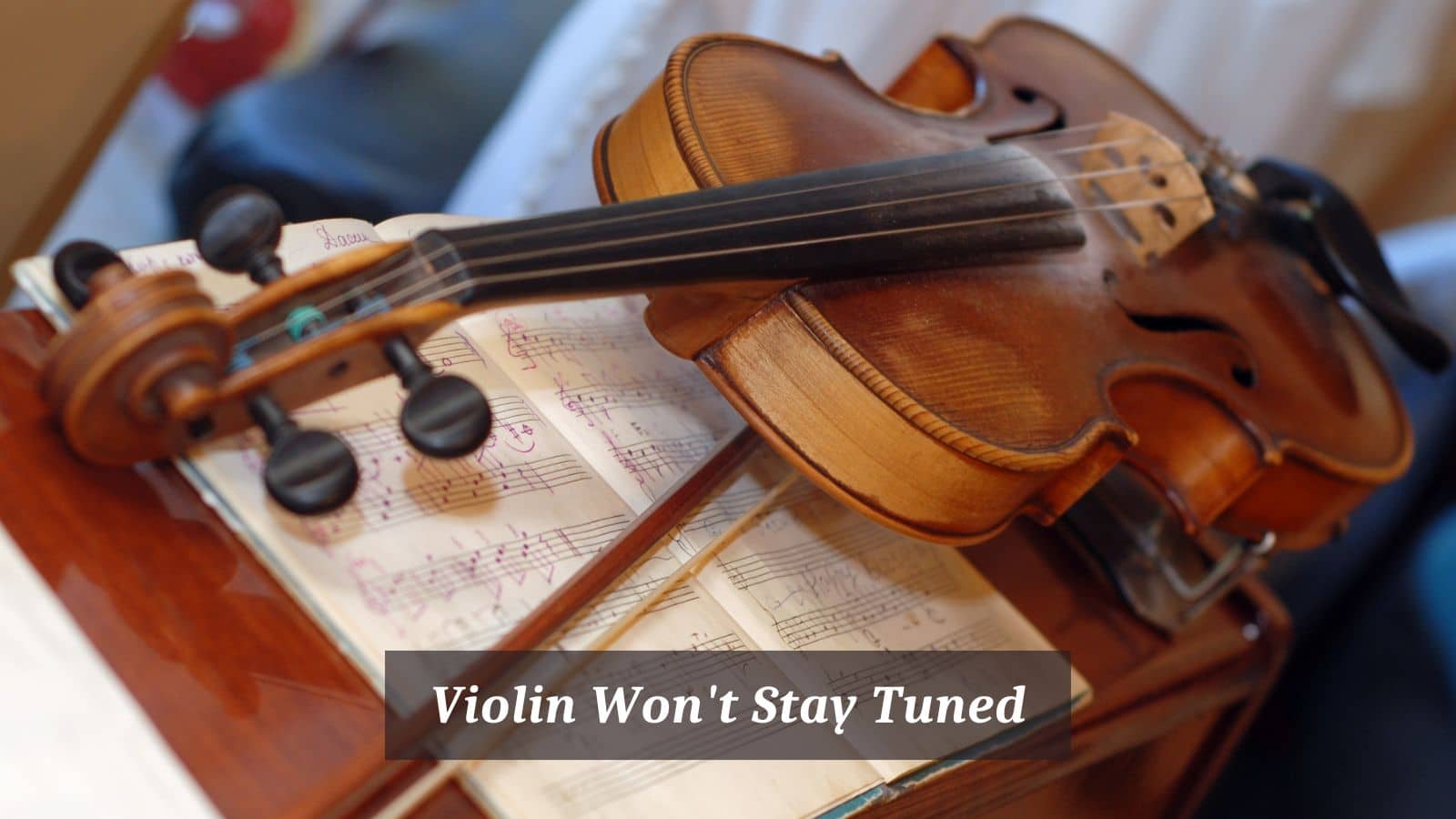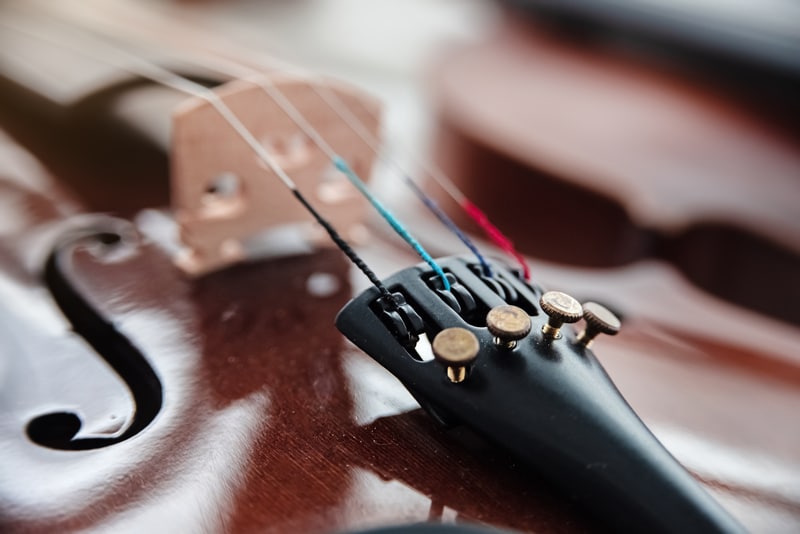
If you have ever had any problem trying to keep your instrument in tune, you are not alone. This is a very common issue that has many causes and can affect beginners to professional players.
If you are still facing some difficulties in this regard, keep reading this article and find out how to get rid of this problem, once and for all.
Violin Won’t Stay Tuned
Poorly adjusted pegs
One of the main reasons for instruments that do not remain in tune for long periods of time is the adjustment of pegs. When the instrument is new, it is very likely that it will need some type of minor adjustments in the pegs.
If they don’t fit the pegbox perfectly well, they won’t remain in their correct position or rotate easily. Pegs are like gears inside a watch, they must be perfectly adjusted to run smoothly without any problems.
To fix this, luthiers have especial tools such as sharpeners, knives, and they can make a perfect job that will last.
Quality of pegs
Pegs of poor quality may also suffer a lot with variations of temperature and humidity. This happens when the wood is not of good quality. In cheaper instruments the pegs can even be made of plastic.
Brand of strings
Strings of lower quality are usually not so stable and, in some cases, they are never in tune, even when checked with a tuner.
In this case, the harmonics may be naturally out of tune, almost like the harmonics of a bell. This type of problem can not be fixed. A new set of strings must be put in the instrument.
Old strings
Strings that are very old or suffered some corrosion and became worn may also become naturally out of tune. At this point, they need to be immediately replaced because they can either break or have a negative impact in the student’s musical development.
Strings unwinding
As we mentioned before, strings that are old or even new strings that have imperfections in their outer layer will also sound out of tune. They can also be in the imminence of breaking.
Weather conditions
When the weather is too humid, the instrument absorbs part of the humidity quickly. The wood and the sound are affected. Same happens when the weather is too dry.
Because the instruments are usually adjusted under ideal conditions, any big variations in temperature or humidity will cause the instrument to suffer, and one of the consequences is the difficulty in adjusting the pegs, which get stuck or too loose.
Strings can also expand or contract a little and these minimal changes also affect the pitch. Moving the instrument, for example, from a hot room to a cold room can also be a disaster for the instrument.
Fine tuners
Fine tuners were developed to make the life of the violinist a bit easier when tuning the violin.
Usually beginner instruments have all four fine tuners whereas professional instruments have one or two, for the upper strings, which are the most difficult to tune.
When fine tuners are not well adjusted, or suffered some oxidation, they get stuck and may even break. It is possible to play the violin without them but tuning the instrument in this condition will take much more time.
Solutions
When the pegs are stuck, some luthiers recommend some special products that act as a lubricant to make them rotate better.
There is a variety of products in the market, some of them look like a lipstick that can be applied directly in the peg, in the point of contact with the peg box. The peg must be completely removed before application.
A simpler solution to make pegs rotate more easily and with less friction is graphite. With a pencil, the luthier or the player can rub the graphite against the peg. The result is immediate and can be repeated every time the pegs become stuck.
When the pegs are not held in place, maybe they have not been properly adjusted to fit the pegbox. Only a luthier can fix this problem.
However, if the problem is just related to weather conditions, a small trick can fix the problem: by removing the peg and spreading a little of chalk (for blackboards), the friction between the peg and the pegbox will increase, making it work normally again.
This is just a temporary solution and can be repeated a few times. It is always advisable to have the instrument serviced by a reputable luthier.
String crossing
One of the reasons why the pegs seem to not keep their position well has to do with the position of the strings in the peg box.
In order to have a more stable peg, the player should start winding the string towards the opposite side where it sits (for example, to start winding the A string towards the D string), and after that cross it back to the correct position.
This will help secure the string in its position and keep the instrument in tune for a longer period of time.
String tension
When tuning the violin, some players usually go up past the correct pitch and then bring it back to the desired pitch. Although this is not necessarily wrong, this increases the tension of the string between the bridge and the nut.
By playing forte, the string will naturally release this tension and pitch will go down again. Ideally, the player should pull the string a little to make sure this extra tension does not exist.
By doing this, the pitch can be stable for a much longer period of time. It is not by chance that pianos can hold their pitch for many months!
Conclusion
In order to have an instrument that will hold the pitch for a long period of time, it is first necessary to keep it under ideal conditions, avoiding sudden variations of temperature or humidity (for this reason heaters and air conditioning can even be harmful for instruments).
The instrument should be taken to a luthier regularly and undergo any procedures to have the causes of the problem fixed. Good strings, pegs and a well adjusted pegbox are essential for a good performance.
If you have any questions about your instrument, do not hesitate taking it to an experienced luthier in your area.

